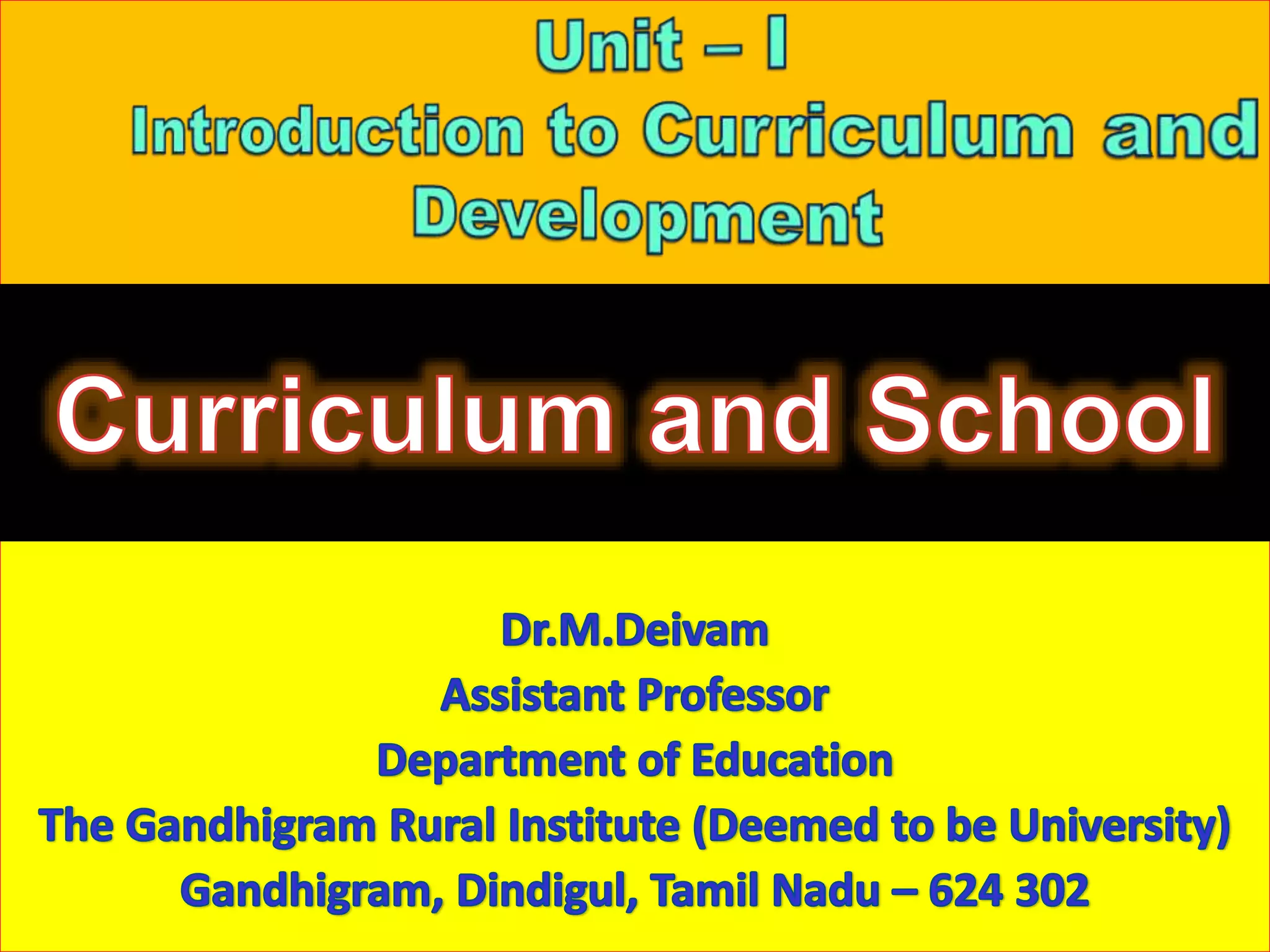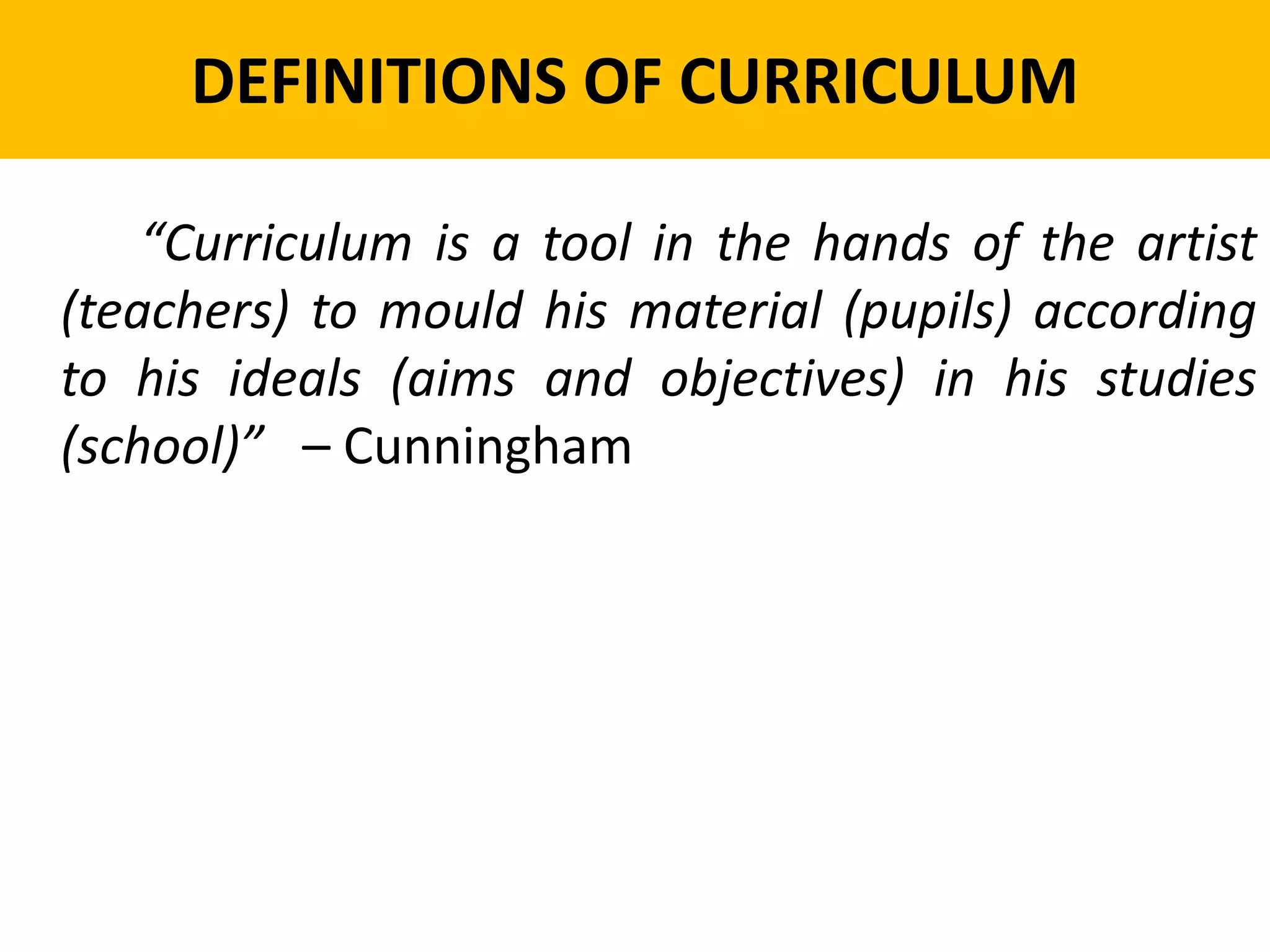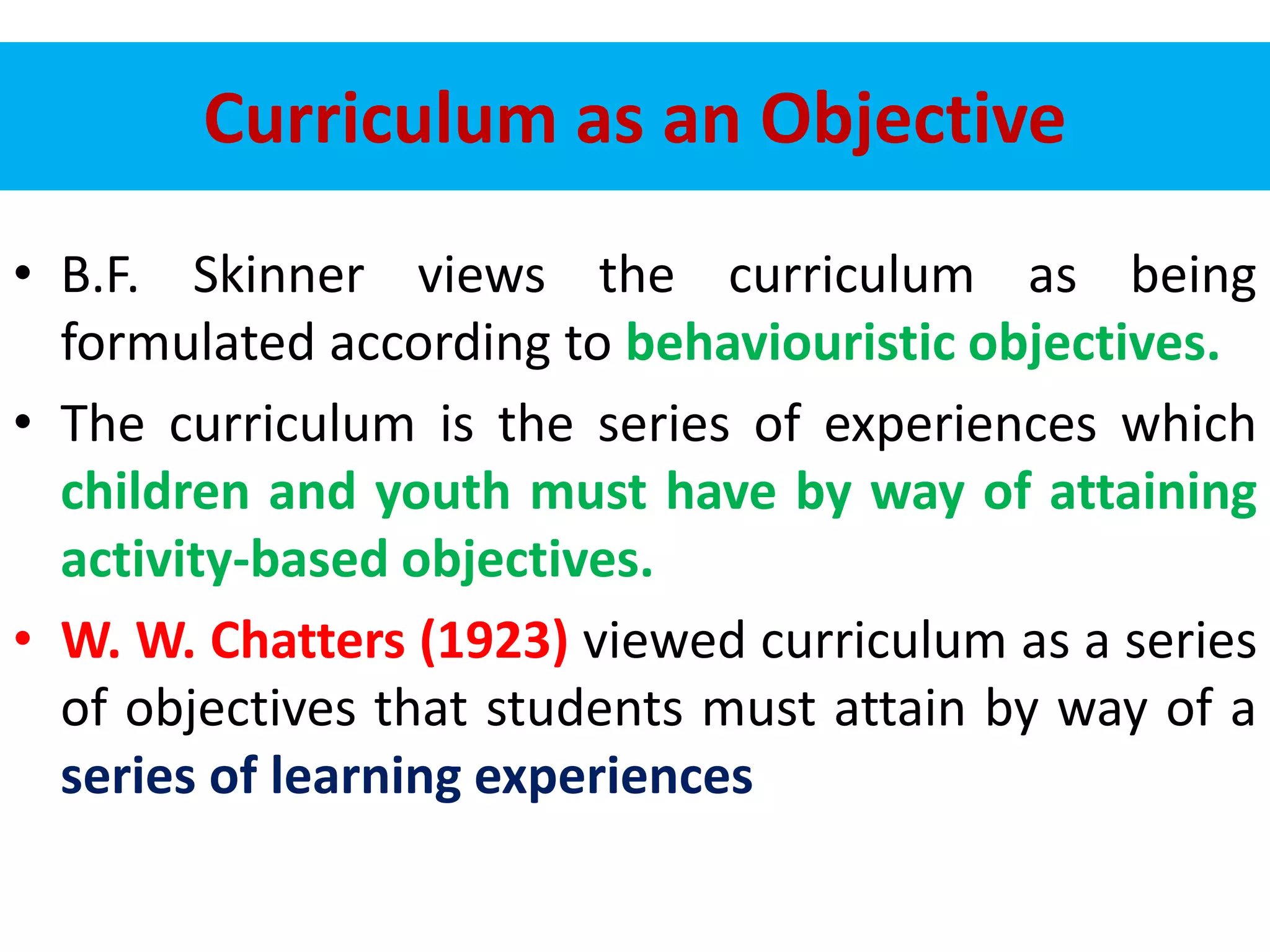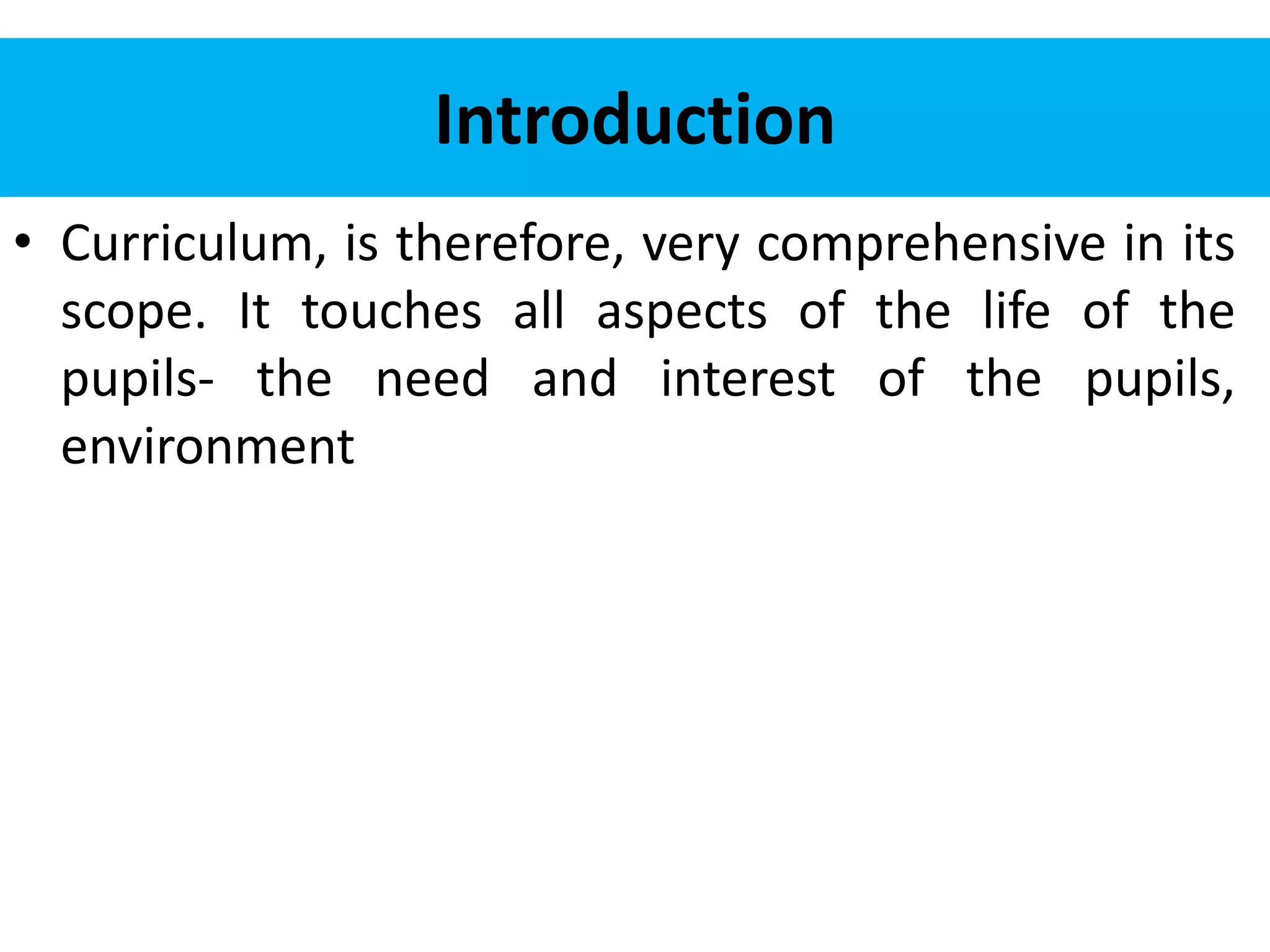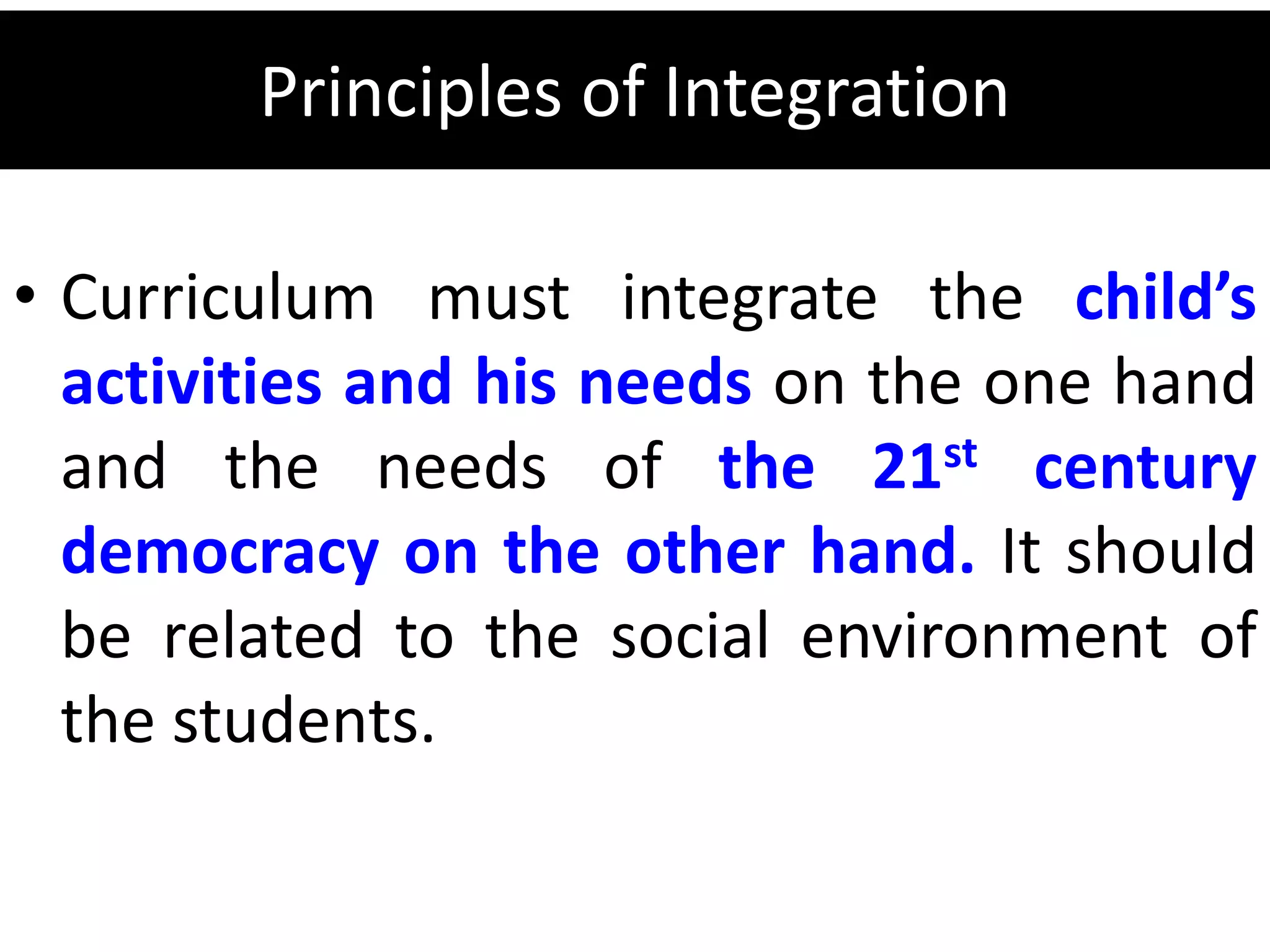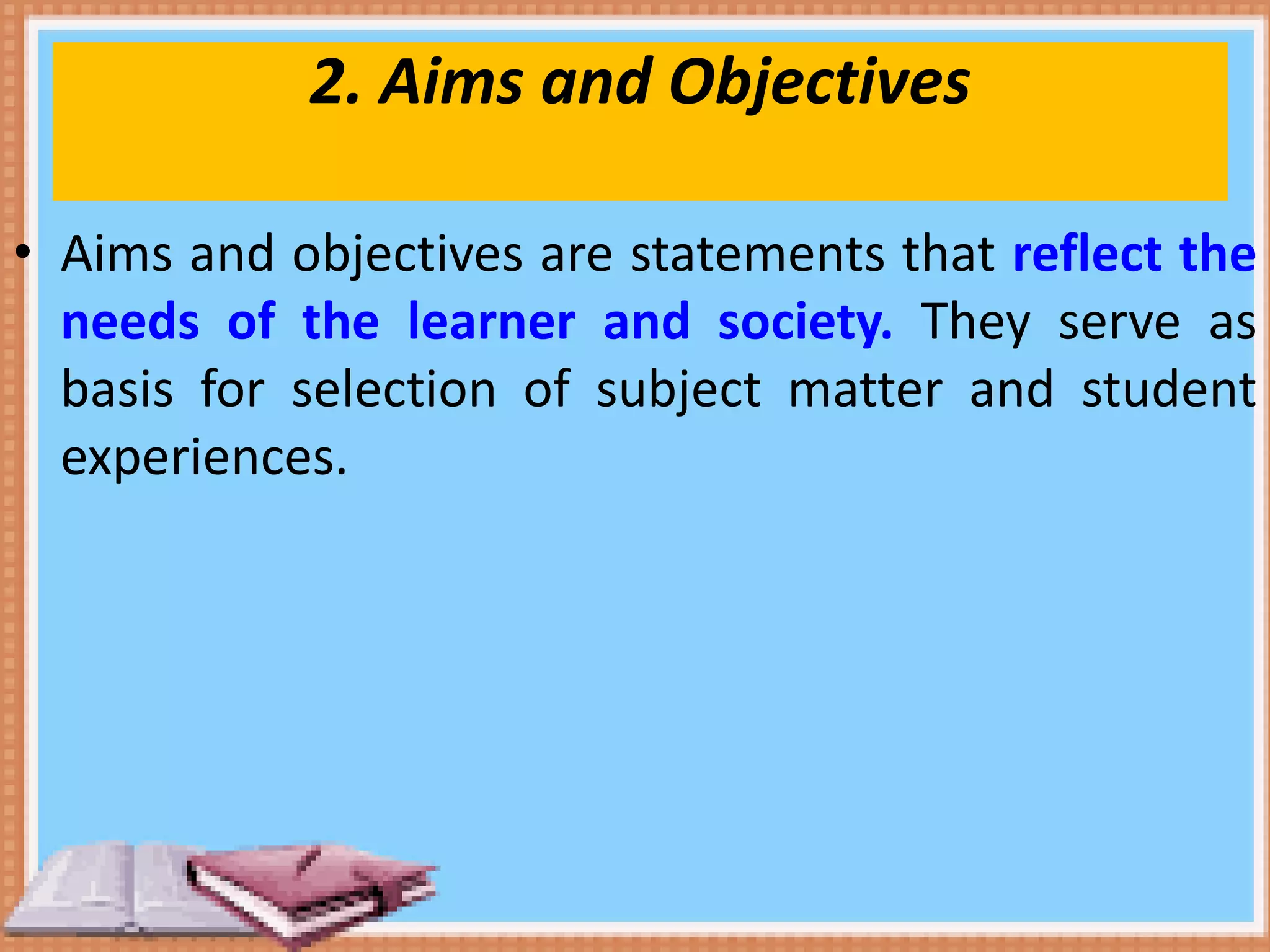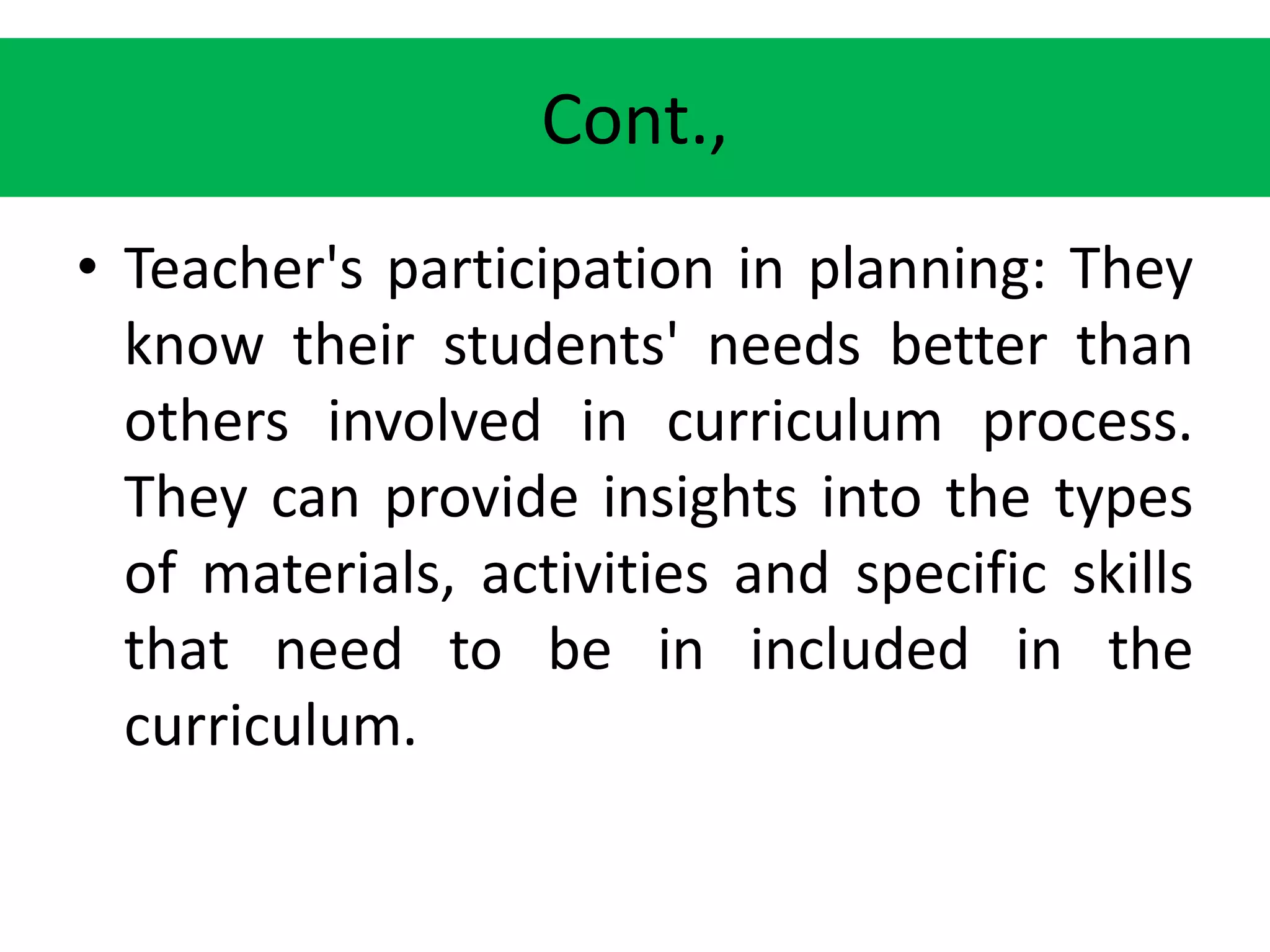The document discusses the meaning, definitions, scope, need, principles, and structure of curriculum development. It defines curriculum as the total efforts of the school to achieve desired outcomes, including all learning experiences and a plan for achieving goals. The scope of curriculum is broad, touching all aspects of student life. Curriculum development is important as it helps realize educational objectives, make efficient use of time, acquire knowledge, determine content structure, and develop student personality, among other reasons. Principles of development include being child-centered, community-centered, integrated, creative, elastic, and enabling livelihood and leisure.
